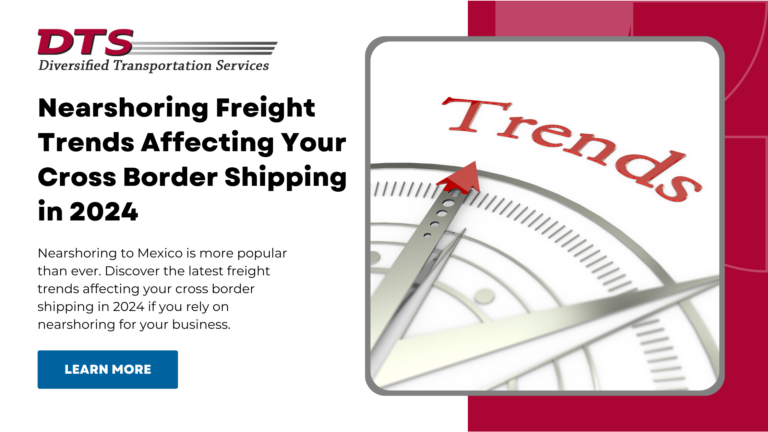
Efficient cross-border shipping is essential for companies relying on nearshoring, which has become increasingly popular in the past few years.
However, changes in regulations and events around the world can change how cross-border shipping works, sometimes at short notice. That’s why businesses using nearshoring must stay updated on the latest cross-border freight trends and how they affect daily operations.
To help you do that, we’re looking at four of the top nearshoring freight trends to be aware of in 2024.
Nearshoring is a type of offshoring. While offshoring refers to contracting workers, businesses, manufacturers, etc., from foreign countries, nearshoring involves working with entities based in nearby countries instead.
In many cases, nearshoring involves moving manufacturing and production closer to home rather than handling it in far-flung foreign countries. One common nearshoring model is companies from the U.S. and further afield working with entities based in Mexico. As a result of this increased demand from the worldwide market, manufacturing production in Mexico has grown significantly recently.
Companies can benefit from nearshoring in various ways, such as avoiding frustrating language barriers when dealing with countries on the other side of the world.
Nearshoring has gained steam since the pandemic, as supply chain disruptions have made logistics more difficult for companies to handle. Additionally, U.S. tariffs on China (beginning in 2018) led various companies to shop around for new offshore partners, and many chose to look closer to home instead.
With nearshoring experiencing a boom, here are some trends and things to watch out for in the year ahead.
Mexico has overtaken China as the U.S.’s top trade partner. The U.S. and Mexico exchanged goods worth around $462 billion in 2023 alone. That trade growth is highly likely to expand in 2024 as Mexico logistics continue to be necessary.
One reason for this uptick in trade is that both countries share a 2,000-mile border with 47 active land ports of entry. That accessibility gives businesses plenty of opportunities to take advantage of this strengthening relationship and the benefits of nearshoring.
The Agreement between the U.S., the United Mexican States, and Canada (USMCA) will be crucial in driving ongoing market growth. The three countries’ agreement came into effect in 2020 as a replacement for the older North American Free Trade Agreement (NAFTA).
The USMCA created a huge free trade zone to facilitate trade between the U.S. and Mexico/Canada in 2024 (and beyond). The U.S. also has free trade agreements with 20 countries in total, including Australia, Chile, Costa Rica, Honduras, Israel, Oman, Panama, and Singapore.
The American Trucking Association (ATA) reported a shortage of 80,000 truck drivers in 2021, which is expected to reach 160,000 by 2030. Factors believed to contribute to this ongoing shortage include the amount of time truckers need to be away from home, an aging workforce, and general misconceptions about the hard work involved.
A persistent shortage of truck drivers could lead to delays and transportation woes for companies that rely on cross-border shipping.
Companies who will be reliant on American and Mexico trucking companies need to be aware of this shortage when switching to nearshoring, and they should create backup plans to help them mitigate potential slowdowns. That will reduce the risk of disruptions that could cost big money and cause reputational damage down the line.
Mexico’s automotive industry has grown 13.5% year-on-year within 2023’s first three quarters, and demand for parts will likely drive the import of parts from the U.S. and Canada.
As a result, U.S. companies producing materials for car production may depend on cross-border shipping significantly in 2024 and beyond.
An ongoing rise in nearshoring means increased transportation of goods across the Mexico-U.S. border. Companies new to nearshoring must partner with cross-border shipping companies that are reliable, knowledgeable, and experienced to help ensure your nearshoring runs smoothly from the start.
DTS is a seasoned shipping logistics company with over 30 years of experience. We help clients across diverse industries with international and domestic freight shipping and logistics solutions. As a member of the Transportation Intermediaries Association (TIA), DTS is committed to service of the highest standard.
For seamless cross-border shipping to support your nearshoring operations, get in touch with DTS today.
Whether you're a company looking to improve one facet of your supply chain, your entire supply chain, or simply looking for a transportation and logistics consultation, we can help.